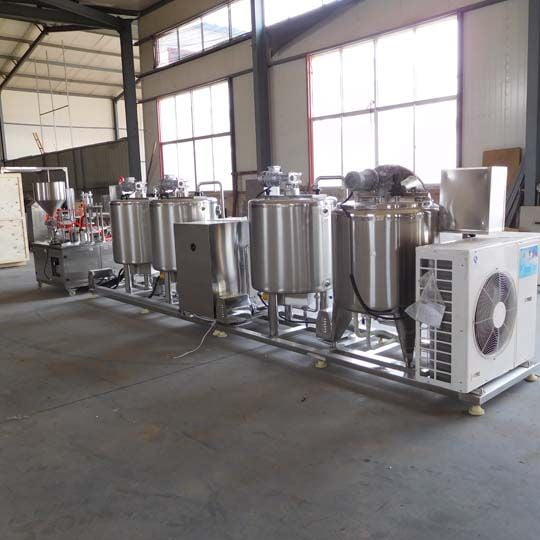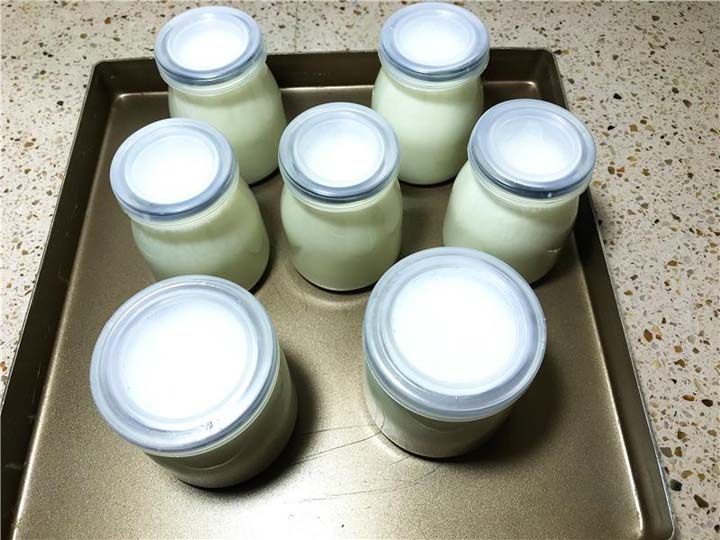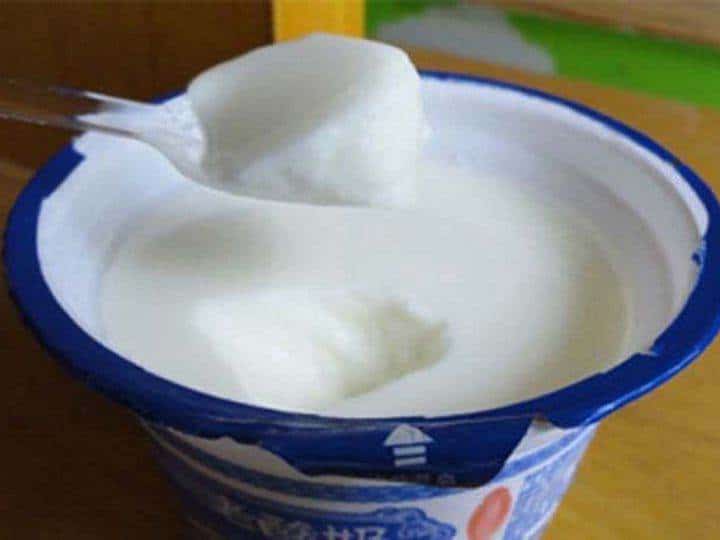The milk sterilizer and the milk pasteurizer are the commonly used sterilization machine for the automatic yogurt production line. The sterilizer machine can keep beneficial bacteria in milk and can kill harmful bacteria such as E.coli. The milk sterilization machine is an important link in the yogurt production line.
Main points of the yogurt production process
- Pre-cooling and pre-heating of milk
- Homogenization of fresh milk
- Sterilization and cooling of milk
- Preparation of lactic acid
- Operating conditions and methods for milk fermentation

Selection and requirements of ingredients for yogurt production
Choose a variety of raw and auxiliary materials that meet quality standards: milk, milk powder, sugar, and stabilizers. Milk powder and sugar are mixed and dissolved in warm water at 50-60°C. Stabilizers such as agar and gelatin can be mixed with a small amount of sugar, added with water, heated, and dissolved thoroughly.
The purpose of milk homogenization is to prevent fat from floating up, make the fat micronized and improve the taste. Generally, a high-pressure homogenizer is used. Milk homogenization process conditions: before homogenization, the mixture should be preheated to 50-60℃, and the homogenization pressure is 9.81-24.5MPa.

The main purpose of sterilization of milk in the yogurt production line
Milk pasteurization purpose:
- Remove oxygen from raw milk, reduce redox reaction, and obviously promote the growth of lactic acid bacteria.
- Due to the denaturation of protein, the hardness and tissue of cow’s milk are improved.
- Effective for preventing whey separation.
- Sterilization and cooling conditions: Sterilization conditions: 90°C, 15min. The sterilized mixture is cooled to 40-45°C for use.
High-temperature instant sterilization:
Operation method: Milk should be heated at a high temperature of 135℃-140℃ for about 2 seconds. This is conducive to the preservation of nutrients and reduces boiling odor.
